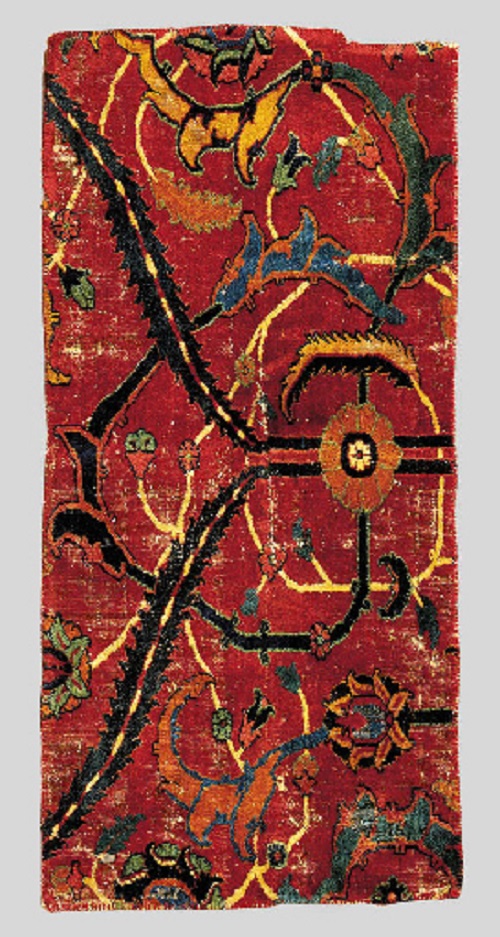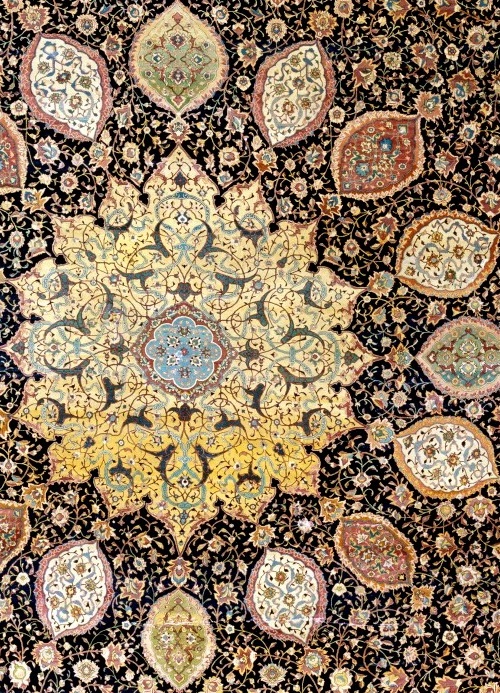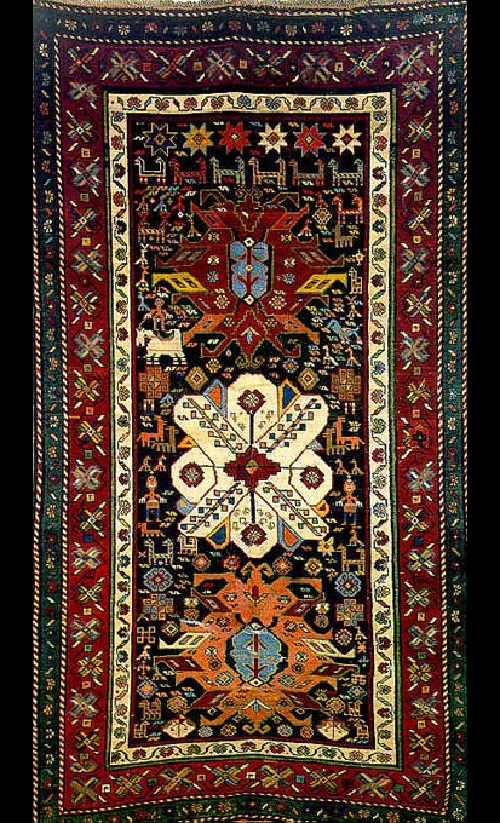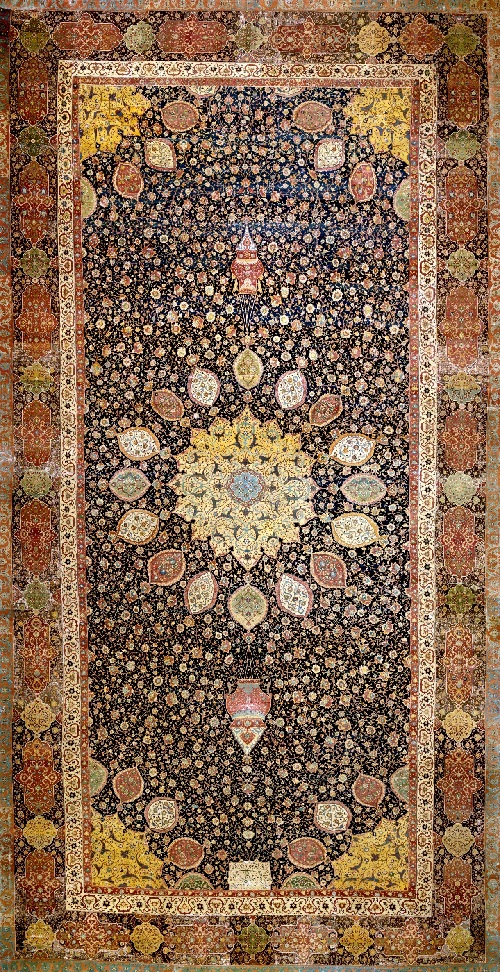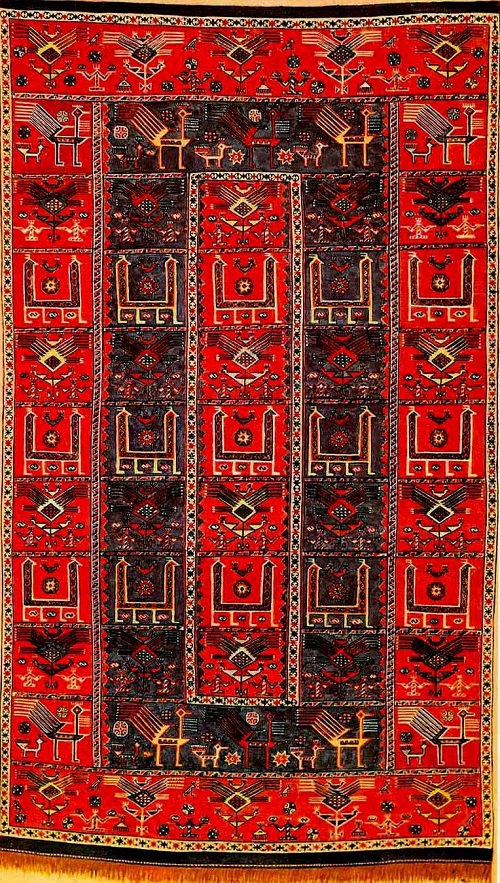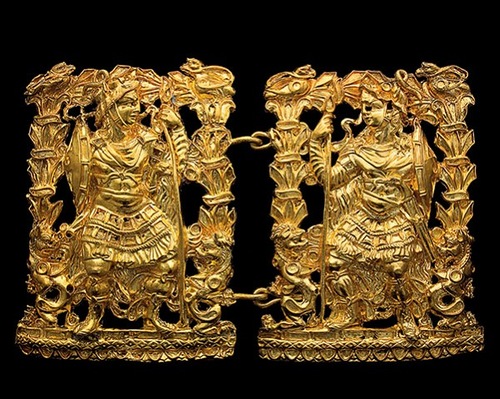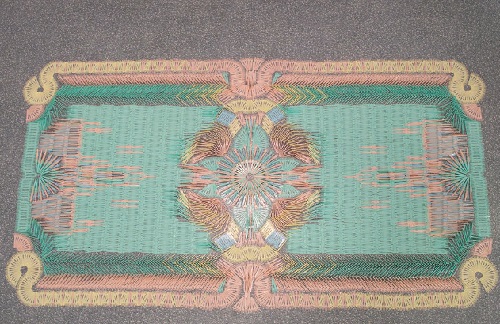Carpet Making ancient art
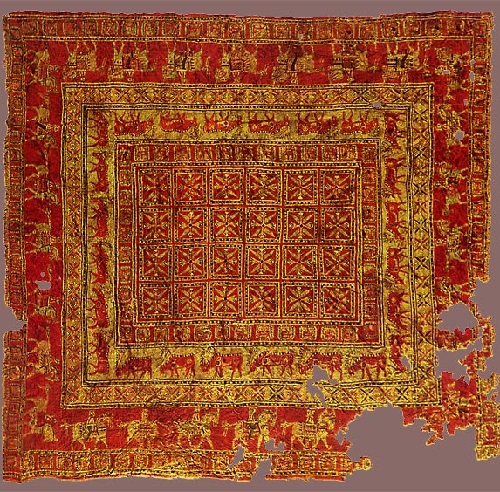
The world’s most ancient pile carpet was found in the largest of the Pazyryk burial mounds, Altay mountains, Russia. The Hermitage Museum St. Petersburg. Carpet Making ancient art
Carpet Making ancient art
The earliest survived carpet relates to V century BC. Archaeologists discovered it in the famous Pazyryk mound in the Altai of Russia, and now it is in the Hermitage of St. Petersburg. Anyway, origin of the carpet is a matter of debate.
Carpet makers were in Central and West Asia. It was possibly a funeral accessory and a masterpiece of Armenian workmanship. Pazyryk carpet concise ornament decorated with pronounced zoo and anthropomorphic elements (riders on horseback). In addition to serving as an ornament and element of interior, it is also the keeper of valuable information. Indeed, very often, the carpet can be read like a book. Besides, when stored properly, the carpets can serve more than one hundred and even a thousand years.

Ivan Tsarevich, the hero of Russian folklore, on The Magic Flying Carpet. Painting by Viktor Vasnetsov. 1880. Carpet Making ancient art
Carpets and rugs are the two words, not usually strictly differentiated, but are vaguely indicative of size, rugs being smaller than carpets. In the West it was not until the 18th century that they became common as floor coverings (rushes and rush matting were generally used for this purpose), but they have also been used in many other ways to cover beds, tables, and other pieces of furniture, for example, as wall hangings, and as the curtains of tents. In the East, where they originated, they are also used as part of religious ceremonial—prayer rugs on which to kneel during devotions. The earliest extant carpets date from the 5th century вс, but there is evidence that they were being made some two thousand years earlier.
Carpet Making ancient art
A large area of the East is renowned for skill in carpet-making, stretching from Turkey through Persia as far as China, but the most prized of all carpets are perhaps those made under the Safavid dynasty (1502 – 1736) in Persia, whose splendor of color and intricate beauty of design have never been surpassed. Wool is the most common material of carpets, but camel and goat hair were much used in oriental examples, and silk and gold thread were also used for particularly luxurious products.
This sumptuous carpet is known as the Ardabil Carpet as it came from the shrine at Ardabil in north-western Iran. Dated 1539-40, it is superb example from the greatest period of Persian carpets and rugs. William Morris described it as ‘the finest Eastern carpet which I have seen’. (Victoria and Albert Museum, London)
Oriental rugs were common in Europe by the 15th century, and were being imitated by the 16th century. Folk traditions such as those in Scandinavia and the Middle East still produce carpets using centuries-old techniques and designs. The first great European carpet factory the Savonnerie was founded by Louis XIII in Paris in 1626, and other famous factories include Aubusson in central France (celebrated also for tapestries), Ax-minster in Devon (founded 1755), and Wilton in Wiltshire (founded c. 1740). All carpets were made on hand looms until the 1840s, when power-looms made it possible to mass produce them, revolutionizing the industry.
Carpet Making ancient art
Carpet weaving, being a type of Armenian arts and crafts, is inextricably linked with other kinds of arts and crafts of Armenians, continuing the tradition of other types of national fine art. The main difference between the Armenian carpets from Persian, Azerbaijani and other carpets is that as the ornamental motifs used stylized images of animals and people.
Carpet making – one of the traditional, old kinds of arts and crafts of Azerbaijan. Ancient Azerbaijani carpets are kept in the White House, State Department, and in many museums around the world, including Azerbaijan Carpet Museum in Baku, the Metropolitan Museum in New York, the Museum of Fine Arts in Boston, the Museum of Art in Philadelphia, the Louvre in Paris, the Victoria and Albert Museum in London, the Hermitage, the Vatican, and so on.
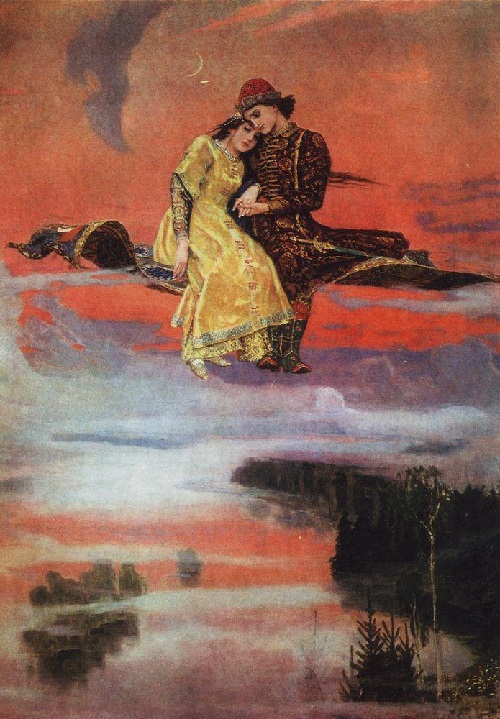
Magic Carpet, 1926. Painting by Viktor Vasnetsov. Ivan Tsarevich and Vasilisa the Beautiful, characters of Russian folklore
In 2006, with the support of the UNESCO, Moscow Office issued a CD titled “Azerbaijani carpets” with 215 pictures, 15 videos and several articles on the art of Azerbaijani carpets. The CD includes sections on the history, the art schools of the Azerbaijani carpet weaving, carpet samples, collections in museums around the world. In November 2010, “Traditional art of Azerbaijani carpet weaving in Azerbaijan” entered in the UNESCO representative list of intangible cultural heritage of humanity.
In 1992, the “Day of Turkmen carpet” officially became a state holiday. The a man far from Turkmen culture it is difficult to understand why this seemingly ordinary textile product is given so much attention, however, just look at the flag or emblem of Turkmenistan – carpet pattern depicted in these main state symbols of the country. Since ancient times, for Turkmen carpet has always been one of the most important things in everyday life. In addition, the Turkmen carpet (better known to the world as Bukhara) was a symbol of power and wealth and, according to some sources, was carrying sacred significance.
Carpet Making ancient art
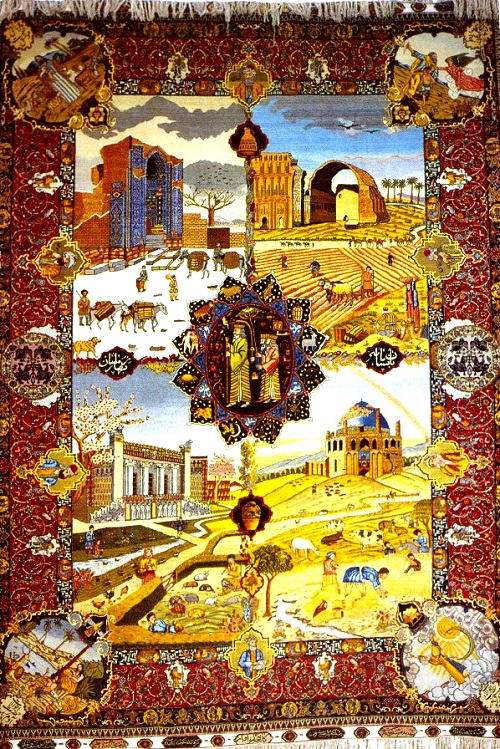
Carpet ‘Dord fesil’. Tabriz school. The end of the XIX century. The State Museum of Azerbaijani Carpet and Applied Arts
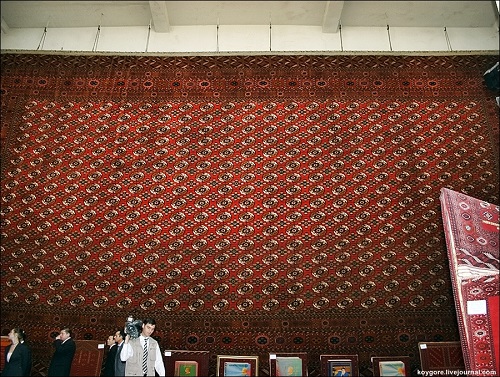
The largest Turkmen carpet. Included in The Guinness Book of Records. Weaved in 2001. Handmade. The total area of 301 m². For it was specifically built an additional building
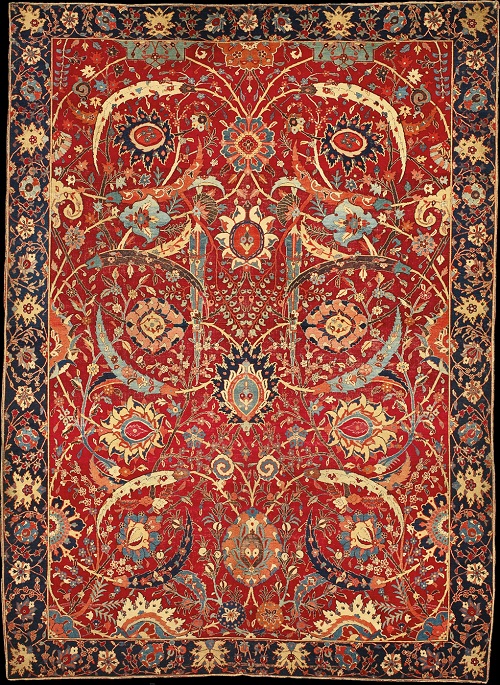
The Clark Safavid Sickle Leaf, vine scroll and palmette carpet, probably Kirman, Southeast Iran, first half 17th century, Shah Abbas Period. William A. Clark Collection
sources:
azerbaijanrugs.com
Norwich John Oxford Illustrated Encyclopedia of the Arts
